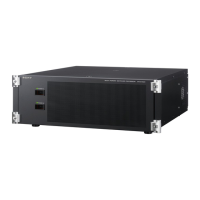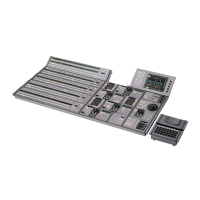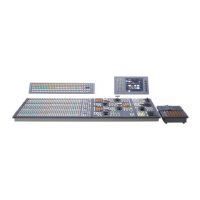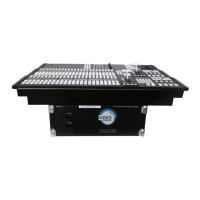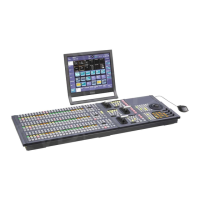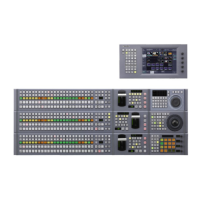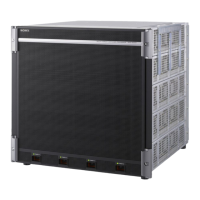234
Interfacing with External Devices
Chapter 17 Control Panel Setup
Making detailed settings for a disk
recorder (video disk communications
protocol)
1
In the Engineering Setup >Panel >Device Interface
>Serial Port Assign menu (7325.5), select the serial
port connected to the disk recorder for which you want
to make the settings.
2
Press [Port Setting].
When “DDR VDCP” is selected as the protocol, the
DDR VDCP Setting menu (7325.9) appears.
When “Simple VDCP” is selected as the protocol, the
Simple VDCP Setting menu (7325.11) appears.
3
In the <DDR Type> group, select the type of disk
recorder.
Player: Functions as a player.
Recorder: Functions as a recorder.
4
In the <Name Mode> group, select the file name
character count mode.
Fixed 8 Character: Uses 8-character file names.
Variable Length: Uses variable-length file names.
(The file name is limited to 23 characters.)
5
In the <TC Sense> group, select the type of timecode
sensing.
Zero based: Mode in which timecode is detected
taking the first frame of the recalled file as
00:00:00:00
SOM based: Mode in which timecode saved in the
recalled file is detected
The details of the above operation modes depend on
the connected device. For more information, consult
the documentation for the connected device.
6
When using a disk recorder that does not support the
timecode drop frame bit, in the <Frame Control
Mode> group, select the drop frame mode or non-drop
frame mode.
Drop Frame: Drop frame mode.
Non Drop Frame: Non-drop frame mode.
This setting is only valid when the system field
frequency is 59.94.
7
Specify the item to which the video port number or
response speed setting applies.
1. Video Port: number of the video port associated
with the serial port to which the setting applies.
For a player, the output port setting.
For a recorder, the input port setting.
2. Maximum Open Delay: Maximum time required to
open a file
3. Maximum Cueup Delay: Maximum time required to
cue up a file
4. Play After Cueup Delay: Delay time from the cued-
up state to begin playback
5. Stop Delay: Delay time from issuing the stop
command until actually stopping
6. Still Delay: Delay time from issuing the still
command until actually stopping
7. Continue Delay: Delay time from issuing the
continue command until actually stopping
8. Idle Delay: Delay time from unloading a file until
entering the idle state
(The idle state is a state wherein a file has been
unloaded but a new file has not been loaded yet, that
is, a state wherein no file is loaded.)
9. Status Sense Interval: Time until the next Status
Sense command is issued (Simple VDCP Setting
menu only)
8
Set the disk recorder video port number or response
speed.
Notes
Notes
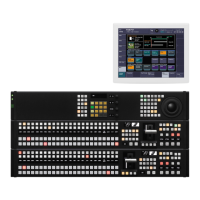
